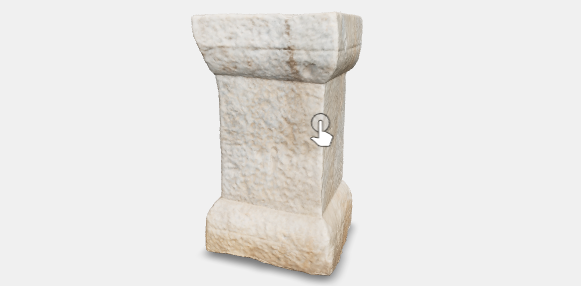Ara. A not finished piece. It features a square-section body with protruding top and bottom, profiled in two well-defined and different sections (straight and circular arc). Given its shape, its function could have been that of a cippus or a statue’s pedestal.
The artefact presents a double colonisation:
1) Epilithic (superficial) with whitish encrustations caused by Bryozoans, sea worms (Polychaeta serpulidae) and white algal thalli;
2) endolithic (inside the marble), made of holes of various shapes and sizes, due to bioerosion caused by boring sponges (image in the middle and bottom left) that, through a mechanical action and an attack by acids, are capable of solubilising the calcium carbonate. This type of degradation is very harmful to stone materials of a carbonatic nature, as it weakens the material’s resistance and potentially leads to a further degradation due to water’s hydrodynamics and sediments’ abrasion.

Orsi P. 1911, Crotone. Scoperte subacquee presso l’Heraeum, in Notizie degli Scavi, Supplemento, pp. 118-124.
Orsi P. 1921, Crotone. Nuove scoperte subacquee di marmi in parte scritti a Punta Scifo, in Notizie degli Scavi, pp. 493-496.
Pensabene P. 1978, A cargo of marble shipwrecked at Punta Scifo near Crotone (Italy), IJNA 7.2, p. 116.



